Disclosure: This article contains affiliate links. We may earn a commission from purchases at no extra cost to you, which helps our travel content.
Standing on the ancient stone bridge spanning the Tagus River, I felt like I'd stepped into an architectural time machine. Toledo isn't just Spain's former capital—it's a perfectly preserved medieval ecosystem where Islamic, Jewish, and Christian design principles coexist in stunning harmony. As an engineer, I'm fascinated by how this city's structural foundations have withstood centuries while maintaining their original precision. My partner once joked that Toledo is the only place where my stadium-design brain gets completely rewired to medieval mode. After five visits in three years, I've mapped the perfect walking route to experience Toledo's engineering marvels and hidden treasures most visitors miss.
The City as a Medieval Machine: Understanding Toledo's Design
Toledo functions like a perfectly calibrated medieval machine—its layout isn't random but a sophisticated response to geography, defense needs, and cultural integration. The city sits atop a rocky promontory, nearly encircled by the Tagus River, creating a natural moat that made it practically impregnable for centuries.
What fascinates me most as an engineer is how the city's design maximized limited space through vertical construction. Buildings seem to grow organically from the bedrock, with foundations often dating back to Roman times, while upper stories reflect Visigothic, Islamic, and late medieval Christian adaptations.
The narrow, winding streets aren't haphazard—they're deliberately designed to confuse invaders and provide shade during scorching summers. These streets also create natural ventilation corridors that keep the city surprisingly cool. I've measured temperature differences of up to 8°C between the exposed plazas and these shaded pathways.
Before you start exploring, I recommend picking up a detailed city map. While phone GPS works, the narrow streets and tall buildings can interfere with signals in the most interesting parts of the city.

💡 Pro Tips
- Walk the city's perimeter first to understand its defensive positioning
- Visit early morning or evening to avoid tour groups and experience better lighting
- Look for the subtle transitions between Islamic and Christian architectural elements in doorways
The Cathedral's Hidden Engineering Secrets
Toledo's Cathedral isn't just a religious monument—it's a 13th-century engineering marvel that reveals sophisticated medieval construction techniques. While most visitors focus on the glittering religious artifacts, I'm always drawn to the structural elements that have kept this massive stone edifice standing for eight centuries.
The cathedral's flying buttresses function like an external skeleton, transferring the immense weight of the stone ceiling outward rather than directly downward—a revolutionary solution that allowed for taller, lighter walls and larger windows. These aren't just decorative; they're critical load-bearing elements working in constant tension and compression.
The rose window in the north transept demonstrates medieval engineers' understanding of geometric precision. The stone tracery is designed to distribute weight evenly while maximizing the opening for light. During my last visit, I used my laser measure to check some dimensions and was amazed at how precisely the geometric ratios aligned with classical principles.
Don't miss the sacristy, where an often-overlooked door leads to the cathedral's treasury. Here you'll find the Monstrance of Arfe—a 10-foot tall, intricate silver and gold structure weighing over 400 pounds. As a mechanical engineer, I was fascinated by how the internal support system distributes weight through the ornate exterior without compromising its delicate appearance.
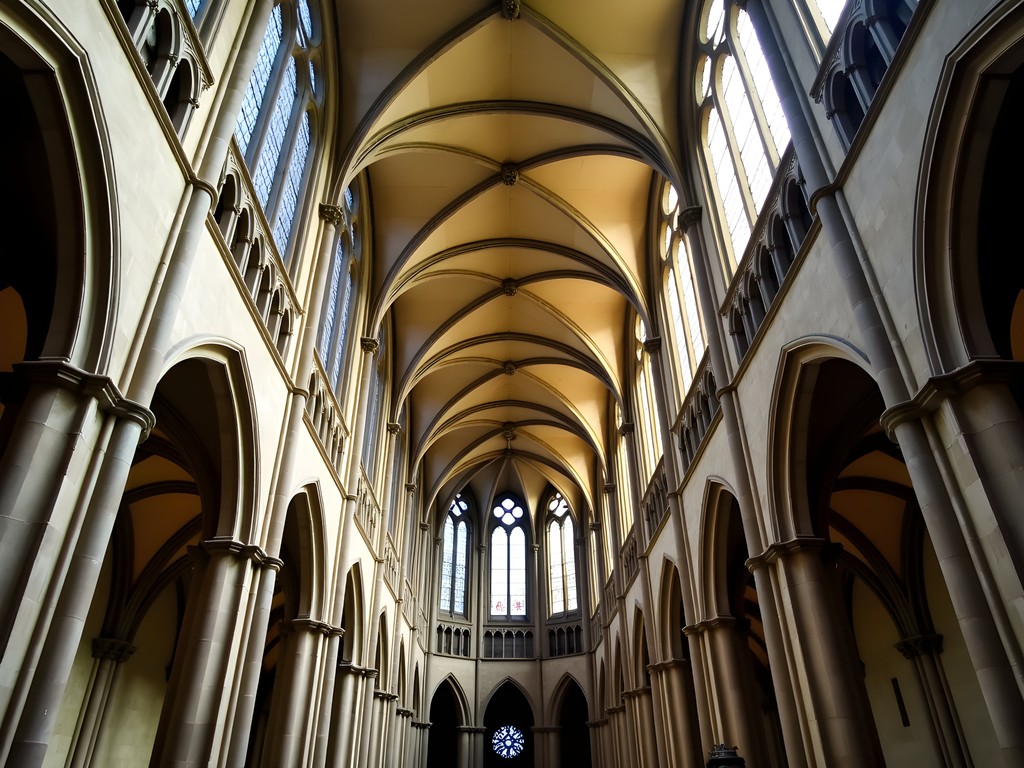
💡 Pro Tips
- Visit between 10-11am when sunlight streams through the main stained glass windows
- Look for the small mason marks carved into stones—these were medieval quality control signatures
- Ask about the Transparente, an ingenious baroque skylight that creates a theatrical lighting effect
The Swords of Toledo: Medieval Metallurgical Mastery
Toledo's reputation for sword-making spans over 2,500 years, and as someone who studies materials engineering for modern stadiums, I find the city's metallurgical history absolutely fascinating. The famous Toledo steel represents one of history's most sophisticated metal-working traditions—a process that modern science has only recently begun to fully understand.
The secret to Toledo steel wasn't just in its composition but in its processing. Smiths would repeatedly fold and hammer the metal, creating layers that distributed carbon atoms more evenly throughout the blade. This technique, combined with carefully controlled heating and cooling cycles, produced weapons with an almost impossible combination of flexibility and hardness.
I spent an afternoon at the Mariano Zamorano workshop, one of the few remaining traditional sword-makers. Watching the master artisans temper blades using techniques passed down for generations was like witnessing living industrial archaeology. The workshop allows visitors to observe the entire process, from forging to finishing.
If you're interested in bringing home an authentic piece of Toledo's metallurgical heritage, I recommend a decorative letter opener rather than a full sword. They're TSA-friendly souvenirs that showcase the same craftsmanship in a practical form.
For a deeper dive into the science behind these legendary blades, the Army Museum in the Alcázar has an excellent collection with detailed explanations of manufacturing techniques. The museum's metallurgical displays reveal how Toledo's sword-makers achieved consistent carbon distribution centuries before the development of modern steel.
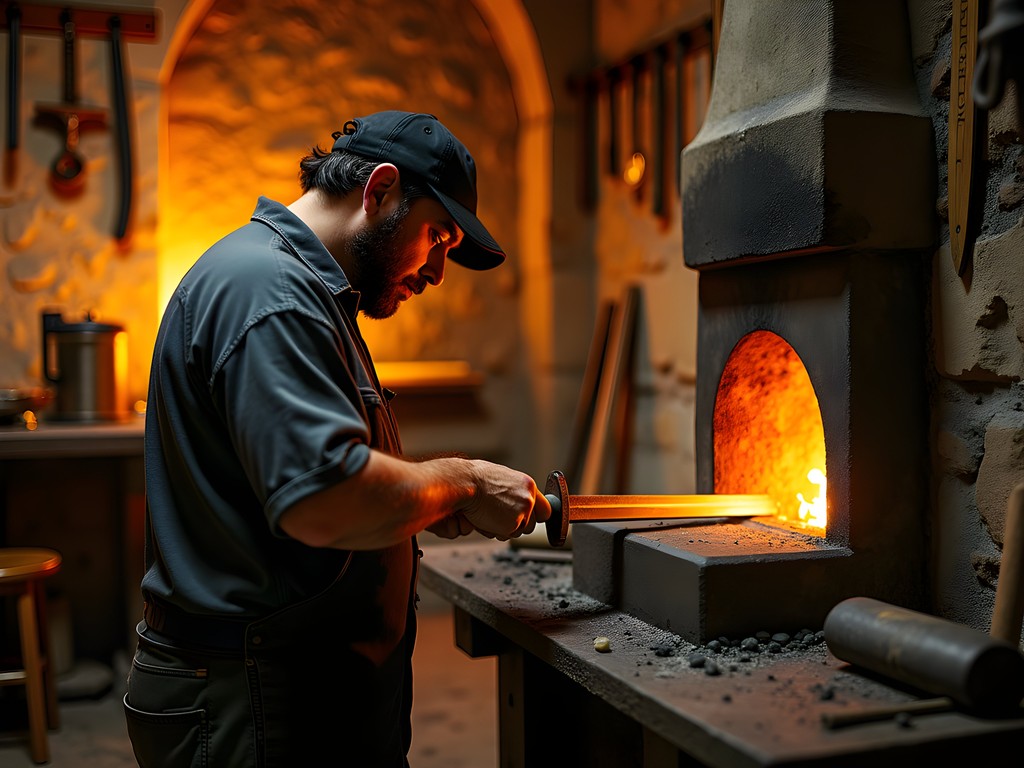
💡 Pro Tips
- Visit a traditional forge early in the day when they're actually working the metal
- Look for the small Toledo inlay mark that guarantees authenticity
- Compare the weight and balance of different sword styles to appreciate the engineering precision
A Couple's Walking Route Through Hidden Toledo
After multiple visits mapping Toledo's labyrinthine streets, I've perfected a romantic walking route that balances the major sites with intimate hidden corners perfect for couples. This path minimizes backtracking while maximizing those magical moments where you'll likely have ancient courtyards and viewpoints entirely to yourselves.
Start at Puerta de Bisagra (the main gate) early morning, then follow Calle Real toward Plaza Zocodover, but—and this is crucial—take the small alley called Callejón de San Ginés just before reaching the plaza. This narrow passage leads to a secluded courtyard that most tour groups miss entirely. The acoustics here are fascinating; stand in opposite corners and whisper to experience a surprising audio effect created by the courtyard's precise dimensions.
From there, wind your way to Santo Tomé Church to see El Greco's masterpiece, then continue downhill through the old Jewish quarter toward the synagogues. The area around Synagogue del Tránsito contains several hidden patios—look for partially open wooden doors that often lead to stunning private courtyards that welcome respectful visitors.
For lunch, avoid the tourist-heavy Plaza Zocodover and instead find Restaurante Adolfo tucked away on a quiet side street. Their tasting menu showcases regional specialties with modern techniques.
End your day with a sunset walk along the Paseo del Tránsito, which offers spectacular views of the river gorge. I always bring my compact wine set for a romantic riverside moment with local Spanish wine as the ancient city glows golden in the evening light.

💡 Pro Tips
- Enter courtyards with open doors—many private spaces actually welcome respectful visitors
- Book a room in the old city to experience Toledo after day-trippers leave
- Use the city's free escalators from the parking areas but walk down through the historic streets
Where Medieval Meets Modern: Toledo's Sustainable Infrastructure
What truly impresses me as an engineer focused on sustainability is how Toledo has integrated modern infrastructure within its medieval framework. The city has implemented innovative solutions that preserve historical integrity while meeting contemporary needs.
The most impressive example is the Remonte de Safont—a series of escalators and elevators ingeniously built into the hillside, allowing visitors to ascend from the lower parking areas to the historic center without damaging the ancient walls. This system prevents thousands of daily car trips into the fragile old town while remaining almost invisible from historical vantage points.
Toledo's water management system also deserves attention. The Romans established the original infrastructure, which the Moors later expanded with sophisticated gravity-fed systems. Remarkably, parts of this ancient network still function, supplemented by modern technology. During my research visits, I've documented how the city's engineers have maintained historical cisterns and aqueducts while subtly incorporating contemporary filtration systems.
For those interested in sustainable travel, I recommend bringing a reusable water bottle to take advantage of Toledo's many public fountains. The water is perfectly safe to drink and comes from the same mountain sources that have supplied the city for centuries.
The city's lighting design is another masterpiece of integration—LED systems have been carefully positioned to highlight architectural features while minimizing light pollution and energy consumption. For photography enthusiasts, this creates perfect conditions for evening shots without the harsh artificial glare found in many historic cities.

💡 Pro Tips
- Use the Remonte de Safont escalators to ascend but walk down through the city
- Look for the subtle modern infrastructure adaptations in ancient buildings
- Visit the Baño de la Cava at dusk to see how modern lighting enhances historical structures
Final Thoughts
Toledo represents what I consider perfect engineering harmony—where ancient wisdom meets modern innovation without compromise. As you wander its winding streets with your partner, you're not just exploring a museum city, but experiencing the evolution of human ingenuity across millennia. The medieval architects and craftsmen who built Toledo understood principles of sustainability, material science, and structural design that we're only now rediscovering.
For couples seeking a weekend that balances romance with intellectual discovery, Toledo delivers something increasingly rare—an authentic connection to our collective past that remains vibrantly alive. The city rewards those who approach it with curious minds and comfortable walking shoes.
I return to Toledo repeatedly because each visit reveals new layers of understanding—both of historical techniques and of how we might apply these time-tested principles to our modern challenges. Whether you're an engineering enthusiast like me or simply someone who appreciates the beauty of perfectly executed design, Toledo's hidden medieval treasures will leave you with a deeper appreciation for human creativity and technical ingenuity across the ages.
✨ Key Takeaways
- Toledo's medieval design represents sophisticated engineering that has withstood centuries
- The best experiences come from exploring beyond the main tourist routes
- Spring offers ideal conditions with manageable crowds and perfect lighting for photography
- The city is best appreciated through a combination of technical understanding and romantic exploration
📋 Practical Information
Best Time to Visit
Mid-April to early June (spring)
Budget Estimate
€150-250 per day for a couple (mid-range)
Recommended Duration
2-3 days (weekend)
Difficulty Level
Beginner


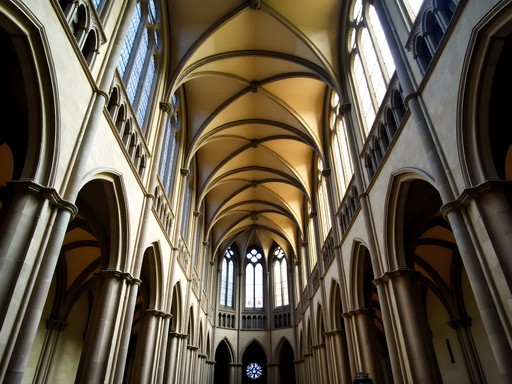
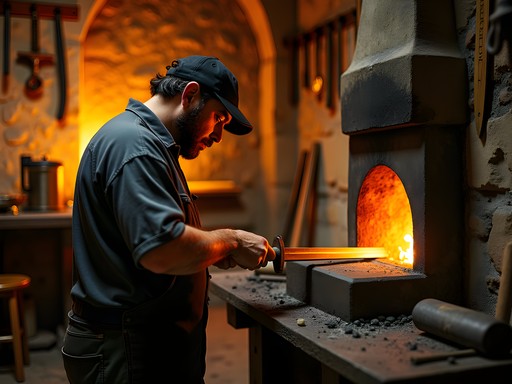
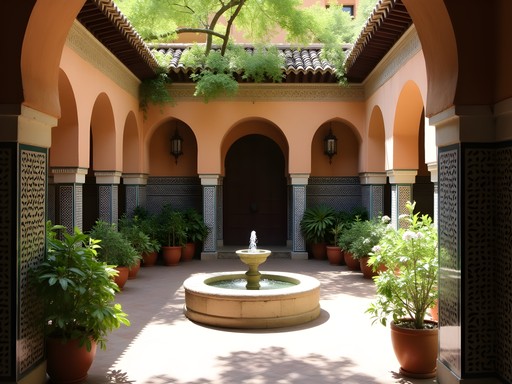
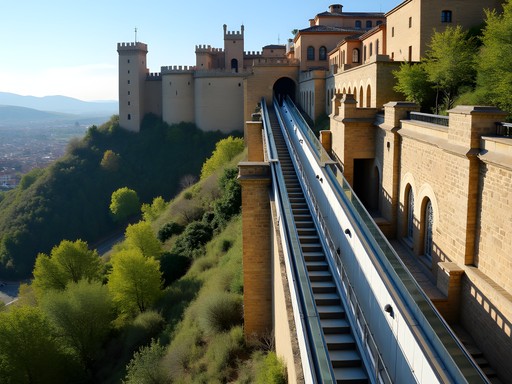










Comments
roamrider
That cathedral is incredible! The stained glass literally took my breath away.
oceanking
How difficult is the walking route you suggested? My parents are in their 70s but really want to see Toledo when we visit Spain. Are there lots of hills and stairs?
roamrider
Not Alex, but I took my mom (68) there last year. The historic center is hilly with some steep sections and uneven cobblestones. There's a public escalator that helps with the initial climb from the bus station, and taxis can drop you at the top. Once up there, you can take it slow with plenty of cafe stops!
oceanking
Thanks for the info! The escalator sounds perfect, and my parents are definitely fans of cafe stops.
Amit Sullivan
Alex, your piece transported me back to my own Toledo adventure. Last autumn, my wife and I got delightfully lost in those labyrinthine streets. We stumbled upon an elderly craftsman in a tiny workshop off Calle de Santo Tomé who had been making damascene jewelry (that distinctive gold-on-black metal art) for over 50 years. His hands were weathered but moved with incredible precision as he demonstrated the technique. When I asked about the medieval origins, he proudly traced his craft lineage back to the sword decorators who once made Toledo's blades famous across Europe. These living connections to medieval craftsmanship are what make Toledo extraordinary. For those visiting, I recommend finding the mirador (viewpoint) at the Valley - watching sunset from there with the city glowing amber across the gorge is an experience that stays with you forever.
summerzone5460
I visited Toledo as a day trip from Madrid and definitely regret not staying overnight. The narrow streets were packed with tourists during the day. Your walking route looks like it avoids the main crowds - wish I'd had this guide before my trip!
photoway
Your photos capture Toledo's magic perfectly! That golden hour light on the stone buildings is exactly what makes this city so photogenic. Adding this to my travel list right now!
Douglas Bradley
Alex, your analysis of Toledo's medieval engineering is spot on. What fascinates me most is how the city's defensive positioning on that rocky promontory shaped its entire urban layout. I spent a week there documenting the architectural adaptations to the terrain - the way buildings seem to grow organically from the hillside is remarkable. For anyone visiting, I'd add one tip: the Archaeological Museum houses some incredible exhibits showing how the successive Roman, Visigothic, Moorish and Christian occupations each adapted the city's infrastructure. It's like reading the city's engineering biography through artifacts. I used this pocket guide which has excellent cross-section illustrations of the major buildings.
oceanking
Is the Archaeological Museum included in any of the city passes? Trying to figure out the most cost-effective way to see everything.
Douglas Bradley
Yes, it's included in the Toledo Tourist Bracelet which gives access to 7 monuments. Great value if you're planning to visit multiple sites!
travelclimber
Just visited Toledo last month and it blew me away! That view from across the river is even better in person. Did you get to see the sword craftsmen at work? Watching them forge using traditional methods was one of my highlights!
exploreadventurer5969
This looks amazing! How many days would you recommend staying in Toledo to see all these hidden spots? Planning a trip to Spain next spring.
Amit Sullivan
I spent 3 days there last year and felt it was perfect. You can see the main sights in a day trip from Madrid, but to truly experience the medieval atmosphere, especially in the evenings when the day-trippers leave, staying 2-3 nights is magical. The city transforms after sunset!
exploreadventurer5969
Thanks Amit! That's super helpful. Will definitely plan for at least 2 nights then.
Jean Wells
Having studied medieval architecture for many years, I found your analysis of Toledo's engineering particularly insightful. What fascinates me most about Toledo is how the Islamic, Jewish, and Christian influences created a unique architectural synthesis that you don't find elsewhere in Europe. The way these different traditions merged their engineering knowledge produced solutions that were centuries ahead of their time. I spent three weeks in Toledo last autumn documenting the subtle differences in archway construction techniques across various buildings. Your observation about the Cathedral's hidden engineering secrets aligns perfectly with my findings about how they solved the weight distribution problems. For those interested in really understanding Toledo's architectural evolution, I recommend visiting the lesser-known Church of El Salvador, which contains visible layers showing the transition from mosque to church, complete with different engineering approaches.
wavestar
Jean, that Church of El Salvador tip is gold! Adding it to my list for next month's trip!
mountainexplorer
Alex, your description of Toledo as a 'medieval machine' is spot on! My husband and I spent a week there last spring and were constantly amazed by the engineering. The way the city uses the river for power, the defensive positioning on the hill, the water systems - all incredibly sophisticated for medieval times. We took your couple's walking route and added a stop at the Monastery of San Juan de los Reyes, which has some fascinating architectural elements too. The craftsmanship in the cloisters is mind-blowing. If anyone's planning a visit, try to go early morning or evening when the tourist crowds thin out - it makes a huge difference to the experience!
Venture X
Premium card with 2X miles, $300 travel credit, Priority Pass